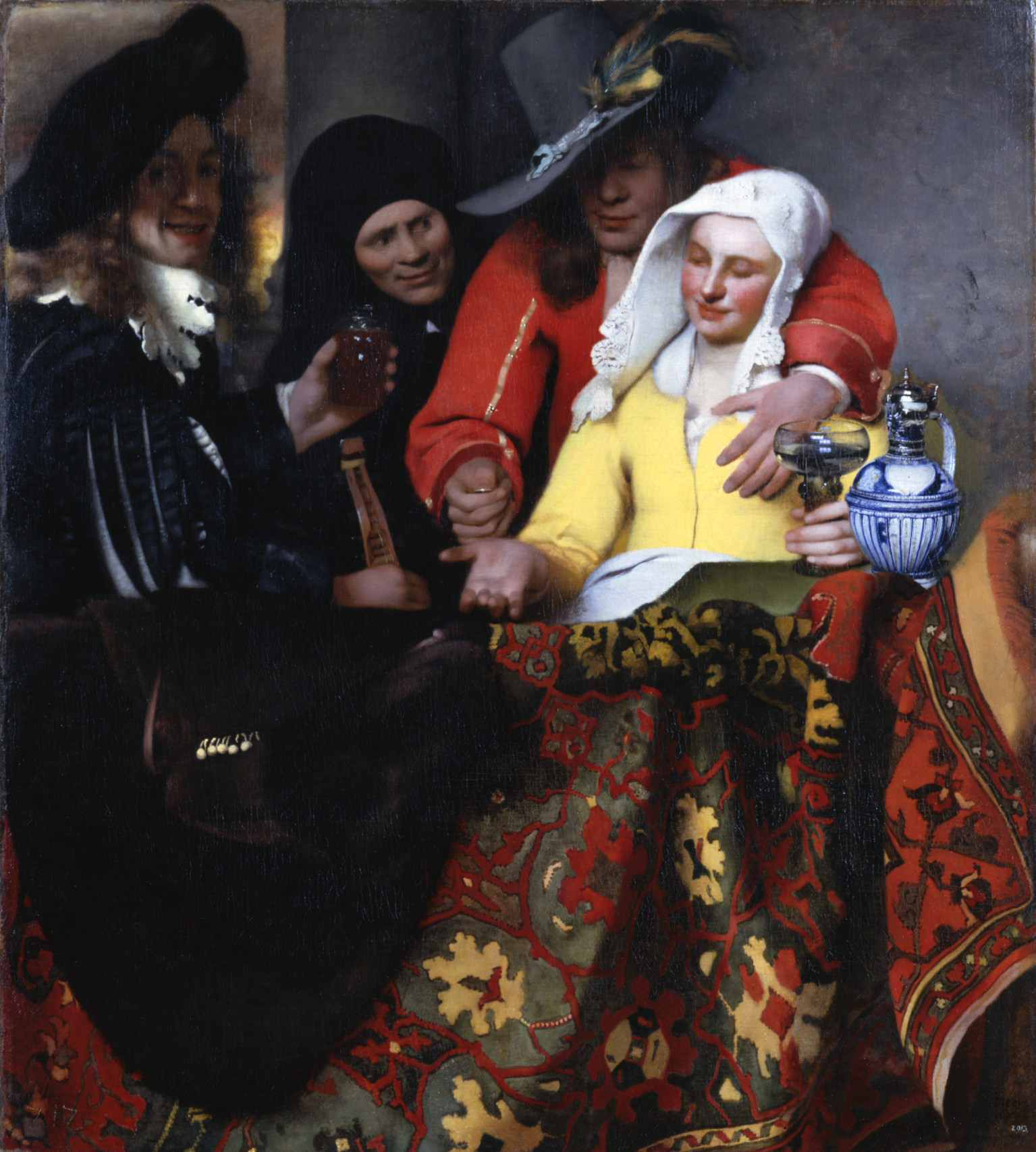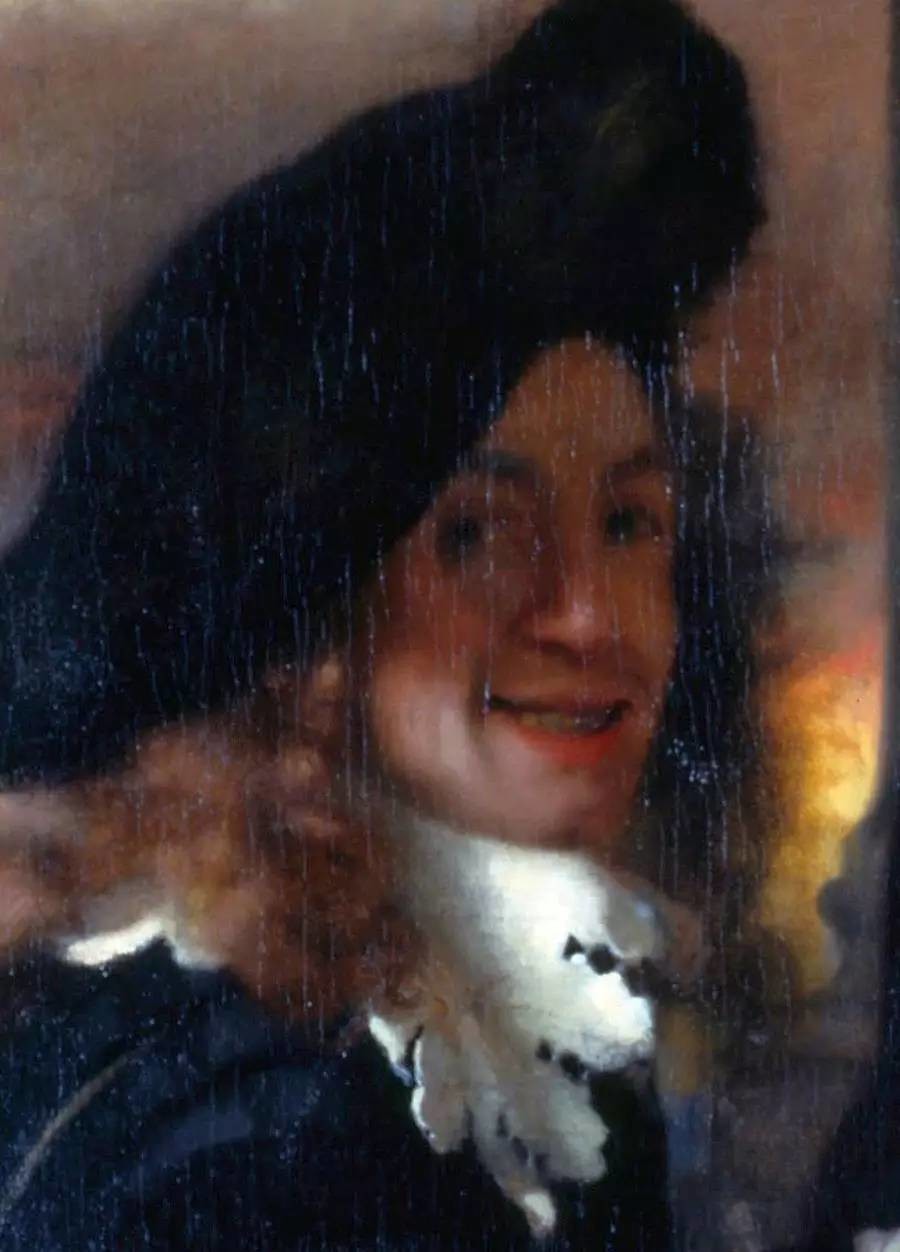Today with this amazing Vermeer we start our monthly partnership with the Staatliche Kunstsammlungen Dresden. Their collection is unbelievable; we will present their masterpieces for the next four Sundays. Enjoy!
(Also, enjoy our paper 2020 DailyArt calendars that we are selling online. Check them out!)
Much of this painting is taken up by a carpet. Through the clearly recognizable pattern it can be identified as a carpet from Uşak, a place in Western Anatolia with a long and rich carpet tradition. The specimen depicted here can be dated to the first half of the 16th century due to the dark blue grounding and the red onion-shaped center medallion. Persian-style carpets can be found in numerous other paintings; their artistry was much admired.
In this painting Vermeer transferred the large scale of his early historical scenes to a genre painting theme. With this new style, a surprisingly new way of seeing and painting also took center stage. He orientated himself with the paintings of a Dutch group of artists whose heyday was already 30 years old: the Utrecht Caravaggists. Beginning with The Procuress, elements of this artistic movement were borrowed from or alluded to throughout his later work.
Vermeer apparently began the painting with the intention of depicting a genre scene with four almost life-size figures. The group is located behind an imposed balustrade, where the sitters communicate both with each other and with the viewer in the narrowest of spaces. Vermeer presents us with a cheerful, calm scene, to which one does not notice the objectionable nature of the situation at first glance: the fashionably dressed suitor is paying with his right hand while his left feels the young woman's breast. It's no coincidence that the hands involved in handing over the money are in the center of the composition, which is divided horizontally into two halves by the upper edge of the barrier.
P.S. Read about a secret revealed in another Dresden Vermeer, the famous Girl Reading a Letter at an Open Window here. <3


 Johannes Vermeer
Johannes Vermeer